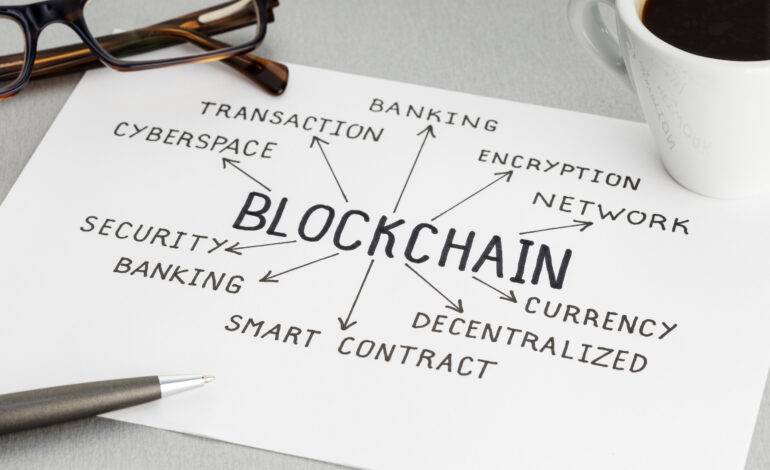By 2025, blockchain won’t just be about crypto coins.
It will be about connecting ecosystems, not just building new ones.
There are now hundreds of blockchains — Ethereum, Solana, Polkadot, Avalanche, and more — creating major silos.
So the big question is:
👉 How do we get them to communicate together?
That’s where blockchain interoperability comes into play.
Without it, we’re stuck in isolated ecosystems.
With it, we unlock the true potential of Web3 — from cross-chain DeFi, NFT transfers, and multi-chain dApps, to a much smoother user experience.
🌐 What Is Blockchain Interoperability?
Blockchain interoperability is the ability of different blockchain networks to communicate, share data, and transfer assets seamlessly —
without relying on centralized third-party intermediaries.
🧠 In essence, it allows blockchains to “speak the same language.”
🔄 Why Interoperability Will Matter Most in 2025
Let’s break down why this matters more than ever:
🔗 Too Many Chains, Not Enough Bridges
With dozens of Layer 1 and Layer 2 blockchains, users are scattered.
Interoperability makes this fragmented world feel unified, enabling smoother transitions and usage across chains.
💱 Cross-Chain DeFi
Imagine using an Ethereum-based token directly on a Solana DEX —
no wrapping, no conversions — just pure DeFi.
Interoperability enables that.
🛡️ Enhanced Security & Redundancy
Ditch centralized bridges and multi-signature vulnerabilities.
Let protocols talk to each other peer-to-peer, reducing risk and friction.
🧩 Composable dApps
Developers can build multi-chain applications using the best features of each network — without being locked into just one.
🚀 Technologies Powering Interoperability
Meet the protocols leading the charge:
1. Polkadot (DOT)
Uses Relay Chain + parachains to enable independent blockchains to run in parallel and communicate seamlessly.
2. Cosmos (ATOM)
Built on the Inter-Blockchain Communication (IBC) protocol — works like an API to connect blockchains.
3. Chainlink CCIP
Chainlink’s Cross-Chain Interoperability Protocol enables secure messaging and token transfers across multiple chains.
4. LayerZero
An omnichain protocol enabling ultra-efficient blockchain connection — already powering apps like Stargate Finance.
5. Quant (QNT)
Built around Overledger OS, it connects public and private blockchains across sectors, ideal for enterprise adoption.
🧠 Real-World Examples of Interoperability in 2025
Here’s how interoperability is showing up today:
✅ Cross-Chain NFTs
Mint on Ethereum, trade or showcase on Solana —
no re-minting required.
✅ Healthcare Data
Global initiatives are using interoperable blockchains to securely share patient data across medical providers.
✅ Cross-Border CBDCs
Central banks are using interoperability to settle international payments with speed and minimal cost.
✅ Multi-Chain Wallets
Wallets like MetaMask and Trust Wallet support multiple blockchains —
allowing users to manage assets across ecosystems.
🧩 Challenges of Interoperability
Despite the progress, this isn’t an easy problem to solve:
⚠️ Security Risks
Cross-chain bridges are prime targets — as seen with the Wormhole hack in 2022.
📉 Lack of Standards
No universal interoperability protocol exists, making integration and development complex.
🔌 Developer Fragmentation
Toolkits, SDKs, and infrastructure vary across ecosystems, increasing development time and costs.
➡️ The good news?
In 2025, we’re seeing the rise of unifying SDKs, cross-chain security frameworks, and collaborative open standards.
🔮 Future Visions: What’s Next for Interoperability?
By 2026, blockchain interoperability could become as default and effortless as email is today.
Here’s what we may see:
🌍 Truly Multichain dApps
No more building dApps for just Ethereum or Solana —
build once, launch everywhere.
🔄 Frictionless Asset Movement
Tokens will flow across ecosystems without being “wrapped” or converted.
🧱 Modular Blockchain Stack
Blockchains become plug-and-play modules, not isolated silos.
🧠 Smart Contract Routing via AI
AI tools will dynamically choose the best chain based on gas fees, latency, or custom logic.
🙋♂️ Conclusion
The future of blockchain isn’t about one chain to rule them all —
It’s about many chains working together.
Interoperability is the needle that threads the vision of Web3 into reality.
It breaks down silos. It enables collaboration.
And in 2025, it’s not just a technical challenge —
It’s the key to unlocking a truly decentralized internet.





